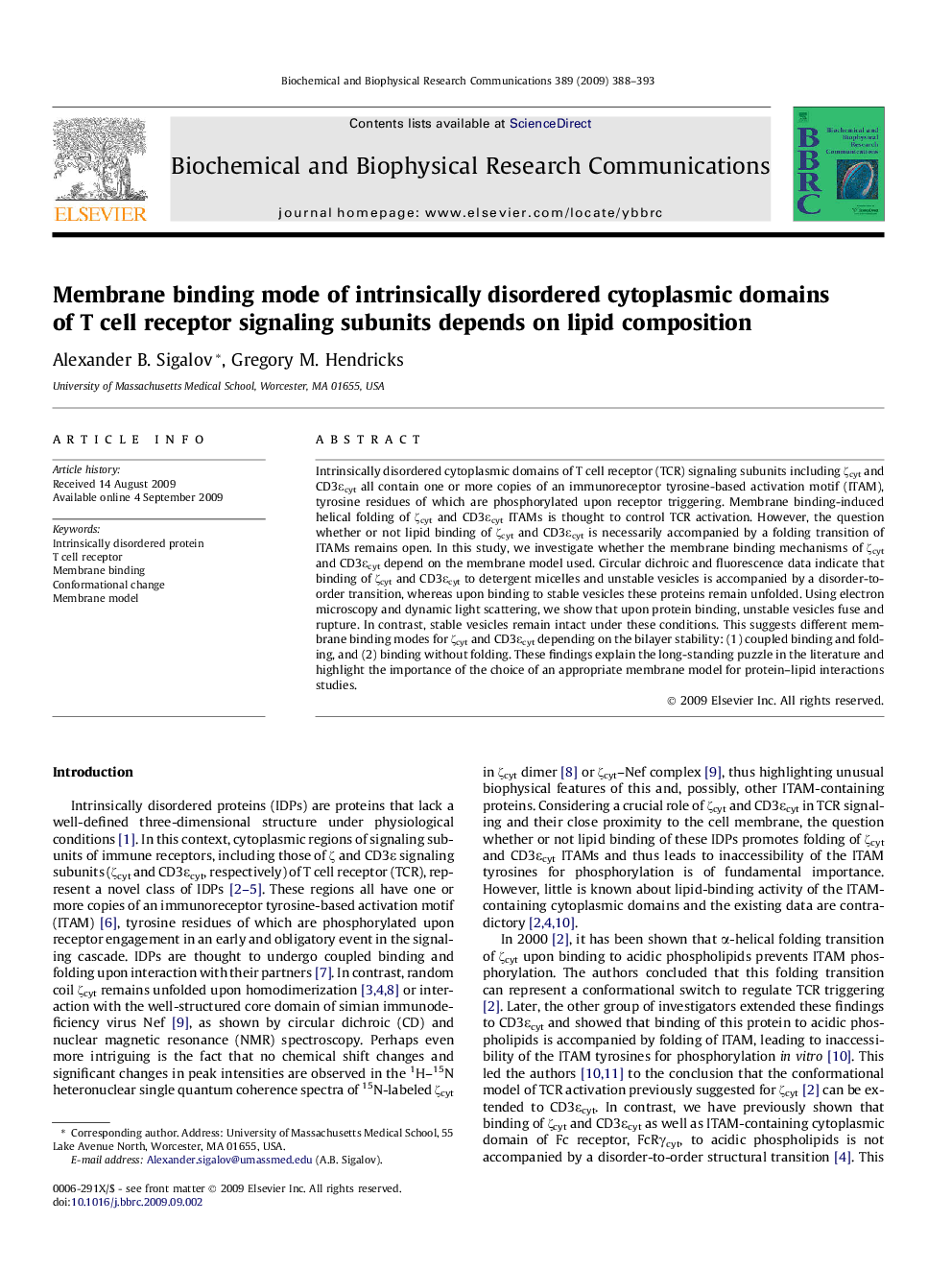| Article ID | Journal | Published Year | Pages | File Type |
|---|---|---|---|---|
| 1932734 | Biochemical and Biophysical Research Communications | 2009 | 6 Pages |
Intrinsically disordered cytoplasmic domains of T cell receptor (TCR) signaling subunits including ζcyt and CD3εcyt all contain one or more copies of an immunoreceptor tyrosine-based activation motif (ITAM), tyrosine residues of which are phosphorylated upon receptor triggering. Membrane binding-induced helical folding of ζcyt and CD3εcyt ITAMs is thought to control TCR activation. However, the question whether or not lipid binding of ζcyt and CD3εcyt is necessarily accompanied by a folding transition of ITAMs remains open. In this study, we investigate whether the membrane binding mechanisms of ζcyt and CD3εcyt depend on the membrane model used. Circular dichroic and fluorescence data indicate that binding of ζcyt and CD3εcyt to detergent micelles and unstable vesicles is accompanied by a disorder-to-order transition, whereas upon binding to stable vesicles these proteins remain unfolded. Using electron microscopy and dynamic light scattering, we show that upon protein binding, unstable vesicles fuse and rupture. In contrast, stable vesicles remain intact under these conditions. This suggests different membrane binding modes for ζcyt and CD3εcyt depending on the bilayer stability: (1) coupled binding and folding, and (2) binding without folding. These findings explain the long-standing puzzle in the literature and highlight the importance of the choice of an appropriate membrane model for protein–lipid interactions studies.
